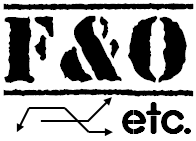|
|
Say you want to buy a stock, say IBM. So all you do is call up your trading broker over the phone, or, login to your internet online trading account and place the order. To place the order you have the simply have to provide 3 things:

1) The name of the stock you want to Buy or Sell (Short Sell)
2) The quantity you want to transact
3) The Price you want to place your order at (Market Price or your choice of Limit Price)
In most books and internet sites, you will find the above three items mentioned. However, one more thing to add to this list is the following:
4) Whether you want to buy or sell
We always take it for granted that we know whether we are buying or selling. However, when it comes to Options Trading, this becomes the first and foremost thing to understand. What are you buying or what are you selling and whether you understand what you are doing. Moreover, the tterminology used for options trading for Buying and Selling is different and that is what we are going to focus on in this article:
The Long and Shorts of Options Trading
As a matter of fact, when I say I am going LONG on a stock, I mean I am BUYING that stock, and I will benefit if the price of that stocks moves upwards. When I say I am going SHORT on a stock, I mean that I am SHORT SELLING that stock, and I will benefit if the price of that stock falls. Fair and straightforward as long as we are talking about stocks.When it comes to Options Trading, things get complex. The meaning of LONG and SHORT still remains the same, but the profit and loss criteria changes.
When I say I am going LONG on an Option Contract, I mean I am BUYING that Option, but it does not mean that I will necessarily benefit from the price rise of the underlying.
When I say I am going SHORT on an Options Contract, I mean I am SHORTING or SHORT SELLING that options, but it does not mean that necessarily benefit from the price drop of the underlying. The following 4 points should be mugged up by every single option trader:
1) In case I go LONG on a CALL option, I will benefit from the upside price movement of the underlying. If the price of the underlying falls, even though I have a LONG position, I will be in a loss.
2) In case I go LONG on a PUT option, I will benefit from the downward price movement of the underlying. If the price of the underlying starts to rise, even though I have a LONG position, I will be in a loss.
3) In case I go SHORT on a CALL option, I will still benefit from the downwards price movement of the underlying, even though I am having a SHORT Option position. If the price starts to rise, I will make a loss
4) In case I go SHORT on a PUT option, I will benefit from the upward price movement of the underlying. I will loose if the price starts to move downwards, even though I am at a SHORT position.
Every option trader should be absolutely clear on the above 4 points. Failing to understanding these will be suicidal and can lead to major financial losses.
So why is there a big difference between the way simple stocks are traded and the way options are traded. There are 2 simple reasons for that:
1. Options are Derivatives - they derive their value from other underlying stocks/indices values
&
2. Options have types within themselves - CALL Options and Put Options
Hence, although we may have a long position, we might loose if the price move updwards and many possible combinations are there

0 Comments: Post your Comments
Wish you all profitable derivatives trading and investing activities with safety! = = Post a Comment